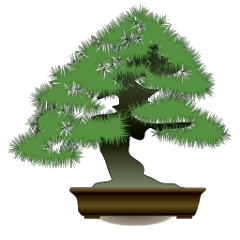Autumn is now well over, deciduous trees begin to turn yellow and lose their leaves. The cold at night begins to be felt and the bonsai must be placed in sheltered places, especially those recently transplanted. Indoor bonsai must be exposed for as long as possible to the sun, near a window, taking advantage of the scarce hours of light that remain. Obviously they should not be placed too close to heating sources, to prevent the earth from drying too much.
WATERING
Watering continues as in the previous month. If a tree has recently been transplanted, after the first post-transplant watering, we will leave it to dry slightly before watering it again. In these moments the excess of water in the ground is very dangerous.
PRUNING AND WIRING
It is still possible to prune and use the wire, bearing in mind that now the branches are less flexible. If possible it is advisable to postpone the bindings in spring.
FERTILIZATION
It is useful to administer organic fertilizer which will have a dual action: it will favor the absorption of the last substances and will create an ideal warmth for maintaining the roots during the winter.
PHITOSANITARY TREATMENTS
The phytosanitary program will only be preventive in nature with a last use of fungicide. Furthermore it will be useful to apply oil, which will form a protective film around the trunk and branches.
OTHER WORKS
Plants have now entered stasis and can be safely transplanted. It is recommended to do this especially for Pines and conifers. Remember to mix a little substrate with Akadama to the new mixture. We protect newly transplanted Pines in sheltered areas (for example under a roof), but never place them inside or in a greenhouse. For older bonsai trees it is good to spend a season or two in the ground or in a large vase to reinvigorate yourself a little.


